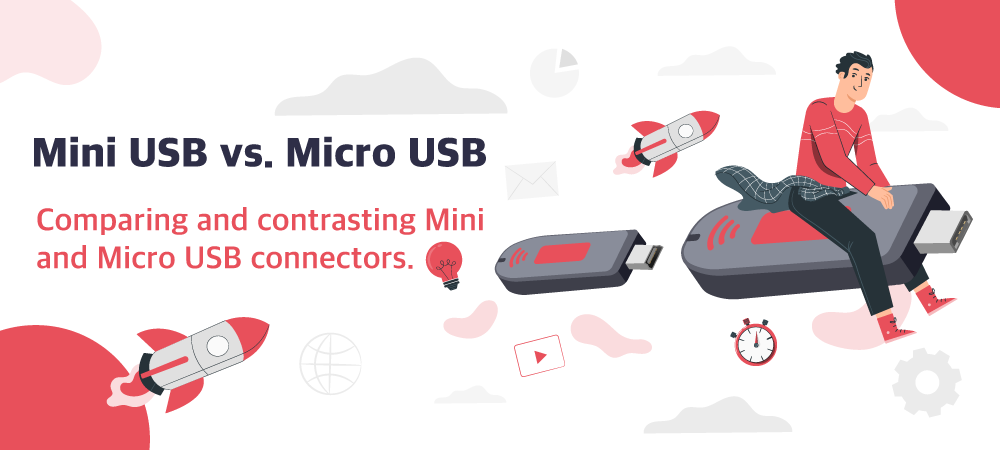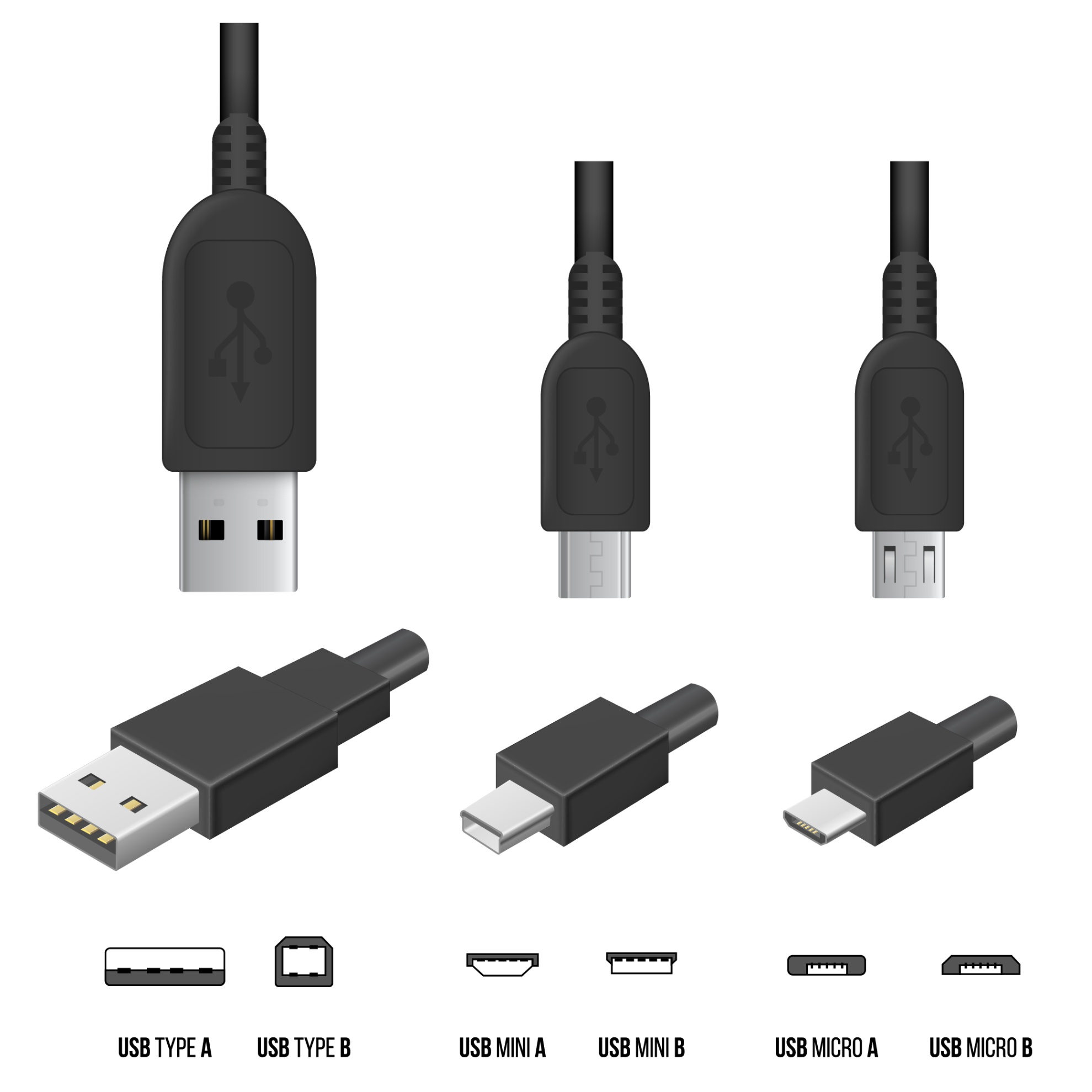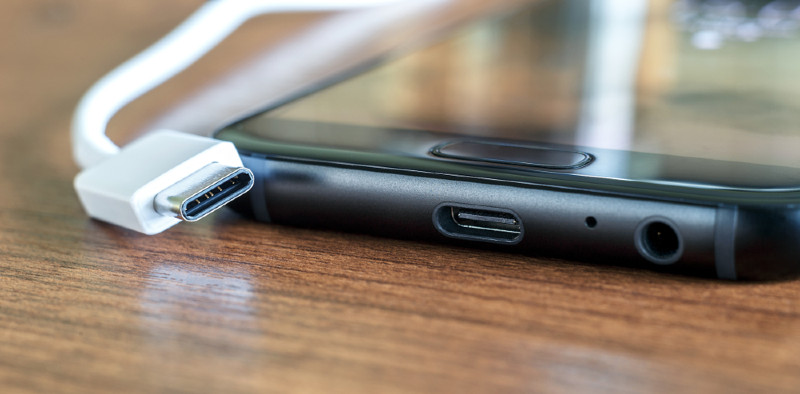
Mini USB vs. Micro USB: What's the Difference?
For a technology that has "universal" as the first part of its name, there sure are a lot of different types of USB connectors. (Look, we didn't name the technology, OK?) Purchase the wrong type of connector, and you might be dealing with some headaches when you can't connect your devices.
While our offerings at USB Memory Direct are focused on awesome custom flash drives with the most common USB connectors, there are definitely many more styles of USB device connectors out there. In fact, some of those styles have been quite important in the history of the devices we all use today.
In this five-minute primer, we'll talk about the question of mini USB vs. micro USB. (Yeah, they're different things!) Plus, we'll throw in some important information about the technology that's going to replace both.

What Is a Mini USB Connector?
A mini USB connector is a much smaller, five-pin version of a standard USB connector, with two crimped sides that give it a trapezoid shape. (Reach back to your memory of geometry class for that one!) These connectors are also known today as mini-B connectors.
Mini USB was introduced in the early 2000s, making it one of the first USB connector variants. It first showed up on devices like mp3 players and point-and-shoot digital cameras. (Remember those?)
The mini-B and its fully extinct cousin, the mini-A, provided an important advantage: They allowed both charging and data transfer between a device like a phone or camera and a computer. Back in the day, that was a revolutionary concept and a hugely useful technology for a world that was just beginning to love mobile devices.
Only a small handful of devices use mini USB connectors today. The technology isn't quite obsolete, but it's rare enough that you might have to order the cables online rather than grabbing them off the shelf from a big-box retailer. It's important mostly as a step in the history of USB cables.
The Best Prices on USB Flash Drives Anywhere!
What Is a Micro USB Connector?
In 2007, several years after the mini USB connector made its debut, the micro USB connector -- also known as the micro-B connector -- arrived. Its sleek five-pin shape is basically a slimmer version of the mini-B connector, built with the intended purpose of standardizing the connectors for Android mobile devices.
The effort at standardization paid off, too -- micro USB has been the standard connector for the charging ports on Android phones and other devices for many years. They offer charging speeds and data transfer capabilities comparable to or better than mini USB, and devices and accessories with micro USB connectors are still reasonably common.
Unfortunately, micro USB connectors have had their share of issues, too. For example, a micro USB cable designed for USB 2.0 might not be compatible with a USB 3.0 device. The ports and connectors are also notoriously easy to break, as anyone who's ever accidentally bent their Android charger slightly out of shape can attest.
However, these issues might become moot points soon. That's because manufacturers who previously used micro-USB connectors have begun to phase them out in favor of USB-C connectors. Next, let's look at what we can expect from that exciting new technology.
The Next Frontier: USB-C Connectors
In the next several years, both mini USB and micro USB will likely be replaced by USB-C. The new USB-C connector is the first true evolution of USB technology in years, and it offers big upgrades in features and performance.
For one thing, USB-C boasts substantially faster-charging speeds, which means phones can have bigger batteries and charge more quickly. But that's not all -- USB-C also offers extremely fast and reliable data transfer speeds, even better than USB-A 3.0 and above.
These features make it almost certain to be the next industry-standard connector. Everything from your laptop to the bulk flash drives in the office supply closet will be sporting a USB-C connector one day, although most experts think that a full transition is still several years away.
Meanwhile, there's also another small but mighty connector on the market today: Apple's Lightning 3. You'll find these tiny, flat ports on all current-generation iPhones and MacBooks. Don't confuse them with USB-C connectors, though, as they're not mutually compatible.
Custom USB Drives: You Dream It, We Make It!

USB Memory Direct offers outstanding custom USB drive options with USB-C connectors, including dual connector flash drives with both connector types. Explore our full range of bulk USB flash drives to see everything awesome that we have to offer!